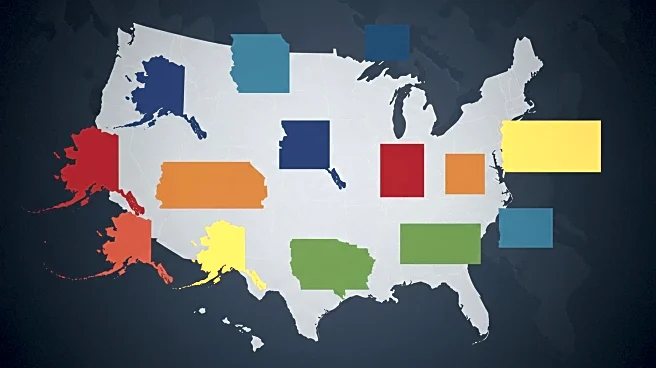What's Happening?
A recent study by the Tax Foundation has analyzed the impact of the One Big Beautiful Bill Act (OBBBA) on federal taxes for individual taxpayers across the United States. The study indicates that while the average tax cut per taxpayer is expected to be $3,752 in 2026, the benefits will vary significantly by state and county. Taxpayers in Wyoming, Washington, and Massachusetts are projected to receive the largest average tax cuts, with Wyoming's Teton County seeing the highest average cut of $37,373 per taxpayer. Conversely, states like West Virginia and Mississippi will experience the smallest average tax cuts. The study also highlights that the $40,000 cap on state and local tax deductions will disproportionately affect taxpayers in high-tax coastal areas. Additionally, the OBBBA is expected to create approximately 938,000 full-time equivalent jobs nationwide, with significant job growth in states like California and Texas.
Why It's Important?
The findings of the Tax Foundation study underscore the uneven distribution of tax benefits under the OBBBA, which could have significant implications for economic inequality across the U.S. While higher-income individuals and business owners in affluent areas stand to gain the most, lower-income populations may face challenges due to cuts in programs like Medicaid and SNAP. The Congressional Budget Office has noted that the poorest 10% of households could see a reduction in resources, exacerbating income disparities. The geographic variation in tax benefits also highlights potential shifts in economic activity and population distribution, as individuals and businesses may relocate to areas with more favorable tax conditions.
What's Next?
As the OBBBA's tax provisions take effect, stakeholders including policymakers, businesses, and taxpayers will need to navigate the changing fiscal landscape. States with smaller tax benefits may advocate for adjustments to federal tax policies to address disparities. Additionally, the potential job creation associated with the OBBBA could influence state-level economic strategies and labor market dynamics. Monitoring the long-term effects on income inequality and public program funding will be crucial for assessing the overall impact of the tax legislation.
Beyond the Headlines
The OBBBA's tax cuts raise important questions about fiscal policy and social equity. The legislation's impact on public services and social safety nets could lead to broader discussions about the role of government in addressing economic disparities. Furthermore, the geographic concentration of tax benefits may influence political dynamics, as regions with differing economic outcomes respond to federal policies. The long-term sustainability of the tax cuts, particularly in the context of inflation and economic growth, will be a key consideration for future legislative debates.














